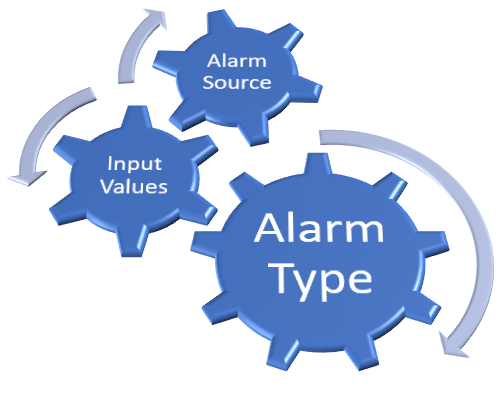About Hyper Alarm Server
Hyper Alarm Server™ was created to provide improvements over previous AlarmWorX™64 alarm server technology.
Hyper Alarm Server uses a different concept to overcome previous configuration and functional limitations. Instead of creating a complex alarm source configuration, which covers all possible scenarios, and then using templates to reduce number of configured settings, the new alarm server defines an alarm type to define an alarm source behavior and structure. The alarm source is then associated with alarm type and is used configure specific-type properties. In general, this concept allows users to design alarms based on their actual project needs.
Alarm Types
An alarm type defines alarm behavior. See Alarm Types Overview.
Alarm States
The Hyper Alarm Server supports the ISA 18.2 state machine. See ISA 18.2 Alarm State Transition Diagram.
Alarm Sources
An alarm source, also called an alarm Area, needs to specify an alarm type. The selected alarm type defines alarm behavior.
Alarm Source Concept

Client Access
All sources are organized in a tree structure of areas. Clients, like the AlarmWorX™64 Viewer, subscribe to an area, or to the root. Additional filters can also be specified. The Hyper Alarm Server is accessible as an out-of-process FrameWorX Server point manager. This is the only client interface directly embedded to Hyper Alarm Server.
Alarm data is available via alarm subscriptions or as real-time process points and methods located underneath each alarm source. This concept is the same as in the original alarm server implementation.
Alarms and alarm events can be associated with Equipment assets (AssetWorX™)and are then accessible via the AssetWorX point manager interface, as well as through the Hyper Alarm Server point manager interface.
Redundancy information is available in MonitorWorX Viewer or as a set of process points and methods.
Client-side redundancy uses the standard redundancy model implemented in the FrameWorX Server.